Are you ready to embark on a year of creative sewing projects without a hitch? Look no further – Sewing Direct is here to ensure your sewing machine is in top-notch condition for a year filled with stitches and creativity! Start 2024 right by booking your sewing machine service with us this January.
Why Choose Sewing Direct?
At Sewing Direct, we understand the importance of a well-maintained sewing machine. Our team of skilled technicians is dedicated to providing top-tier service that goes beyond just fixing issues. Here's why you should choose us for your sewing machine service:
- Expertise: Our technicians are highly trained and experienced in servicing a wide range of sewing machine brands and models. From basic machines to advanced computerized units, we've got the expertise to handle it all.
- Comprehensive Service: We don't just patch up problems – we provide a thorough service that includes cleaning, lubrication, tension adjustments, parts inspection, and rigorous testing to ensure your machine is in peak condition.
- Quick Turnaround: We understand the importance of your sewing machine in your creative process. That's why we strive to provide a quick turnaround without compromising on the quality of service.
Benefits of Booking in January:
January is the optimal time to schedule your sewing machine service with Sewing Direct. Here's why:
- Exclusive Discounts: Book your service in January and enjoy exclusive discounts as a token of our appreciation. Simply mention the code "SEW2024" when booking to unlock special savings on your service.
- Avoid the Rush: By booking early in the year, you avoid the peak season rush, ensuring that your sewing machine gets the attention it deserves without unnecessary delays.
- A Fresh Start: Give your machine a fresh start for the year ahead. Our January service includes a thorough cleaning to remove any residue and debris, setting the stage for smooth and precise stitches.
How to Book Your Service:
Booking your sewing machine service with Sewing Direct is easy and convenient:
- Visit our Website: Head over to [www.sewingdirect.com] to explore our services and pricing.
- Call Us: Reach out to our friendly customer service team at 01159223904 opt 1 to schedule your service over the phone.
- Mention the Code: Don't forget to mention the code "SEW2024" when booking to secure your exclusive January discount. of 10%
Start 2024 with the confidence that your sewing machine is in the capable hands of Sewing Direct. Book your service this January, enjoy exclusive discounts, and sew into the new year with the assurance that your creative projects will be nothing short of amazing. Choose Sewing Direct – where your sewing machine gets the care it deserves.
that's sew ready for success!
Sewing enthusiasts, mark your calendars! On the 5th of January, something magical unfolded at Sewing Direct Beeston. Our store played host to a thrilling Baby Lock Demonstration Day, featuring the expertise of none other than Katy from Baby Lock. From 10 AM to 2 PM, the event promised an immersive experience into the world of Baby Lock, and it certainly delivered.
The Excitement Builds:
As the doors opened at Sewing Direct Beeston, anticipation filled the air. Sewing enthusiasts and curious crafters gathered to witness the wonders of Baby Lock machines firsthand. With Katy at the helm, the event promised to be an enlightening journey into the cutting-edge technology and innovative features that make Baby Lock a household name in the sewing community.
Katy's Expertise:
Katy, a seasoned expert from Baby Lock, brought her wealth of knowledge and passion for sewing to the forefront. Attendees were treated to insightful demonstrations, where Katy showcased the full range of Baby Lock machines, highlighting their unique features and functionalities. From the user-friendly Symphony to the advanced technology of the Solaris, Katy guided attendees through the diverse lineup, offering tips, tricks, and personalized insights along the way.
Hands-On Experience:
The Baby Lock Demonstration Day was not just about watching—it was about doing. Attendees had the chance to roll up their sleeves and try out the machines for themselves. From the precision of the needle to the ease of the touchscreen interface, participants experienced firsthand why Baby Lock is synonymous with quality craftsmanship.
Exclusive Offers and Discounts:
To sweeten the deal, Sewing Direct Beeston offered exclusive deals and discounts on Baby Lock machines during the event. It was an opportunity for attendees to take home their dream machine at an irresistible price, ensuring that the magic of Baby Lock could continue in their own crafting spaces.
Community Building:
The event went beyond a mere product demonstration; it was a celebration of the vibrant sewing community that thrives at Sewing Direct Beeston. Attendees had the chance to connect with like-minded individuals, sharing stories, tips, and project ideas. Friendships were forged, and the sense of community that permeates the world of sewing was strengthened.
Conclusion:
The Baby Lock Demonstration Day at Sewing Direct Beeston on the 5th of January was more than just a showcase of machines; it was a celebration of creativity, innovation, and community. Katy's expertise, combined with the hands-on experience and exclusive offers, made this event a memorable experience for all attendees. As the sewing community at Sewing Direct Beeston continues to flourish, the magic of Baby Lock will undoubtedly play a significant role in shaping the future of crafting for years to come. Stay tuned for more exciting events that bring the joy of sewing to the forefront of our creative endeavors.
Tassel ghosts look great and are so easy to make! All you need is some white yarn, black felt, scissors, a small book or firm cardboard, glue, and away you go!!
I've used a glue gun for quickness, but any fabric glue will work.
TOP TIP: If using fabric glue, use a cocktail stick or cotton bud to apply the glue for a mess free experience!
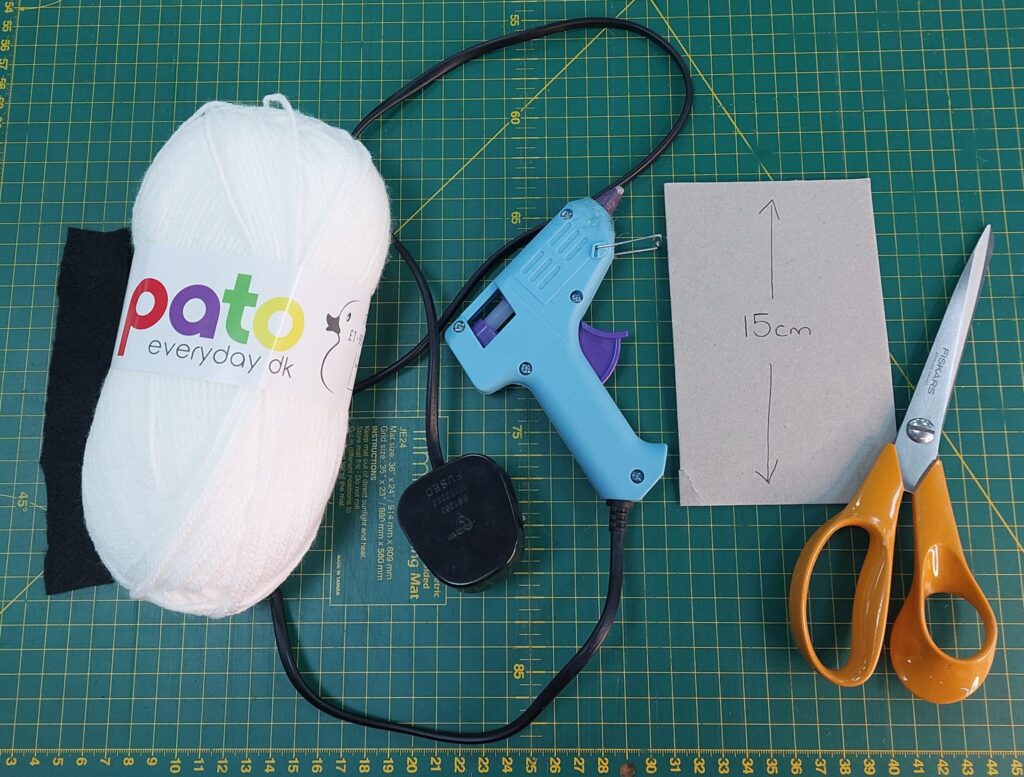
First of all, take your book/cardboard and wrap your wool around it about 30 times.
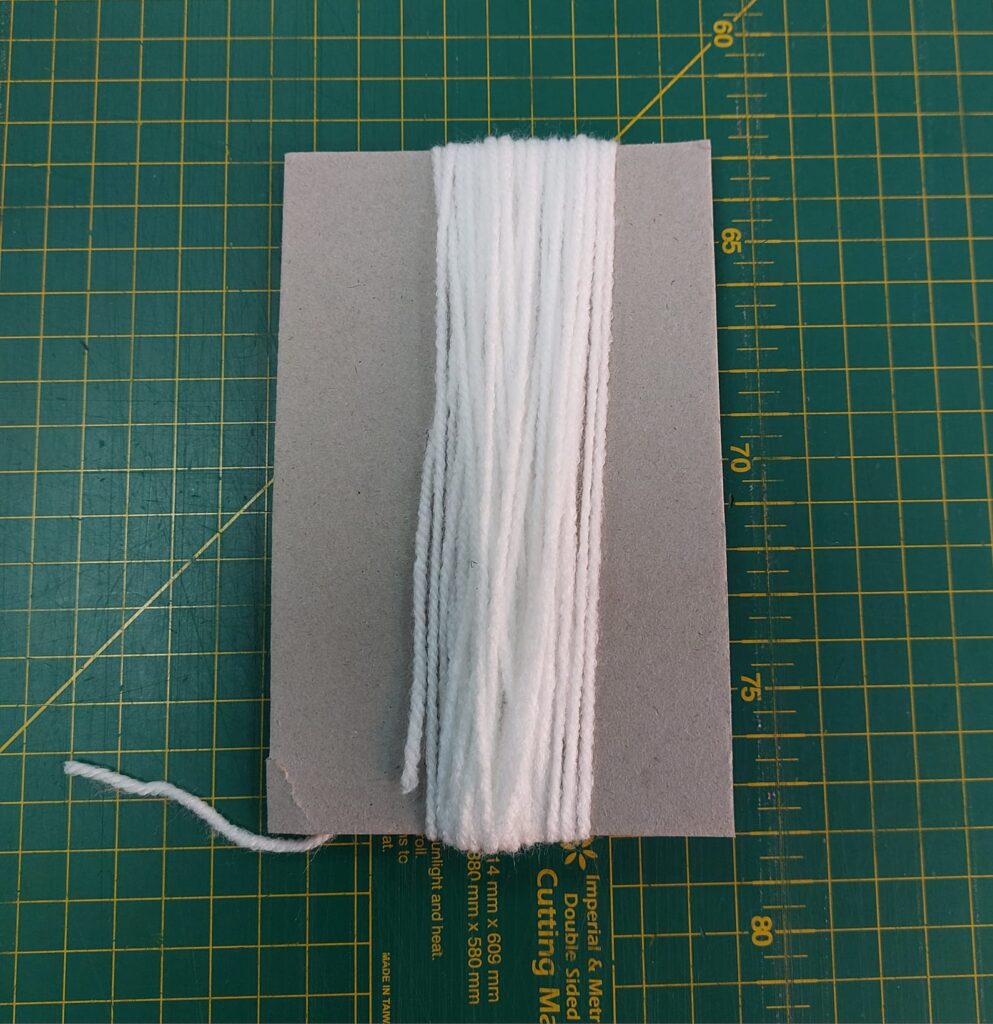
Carefully remove the yarn and tie a further piece of yarn approx 20cm long firmly at one end.
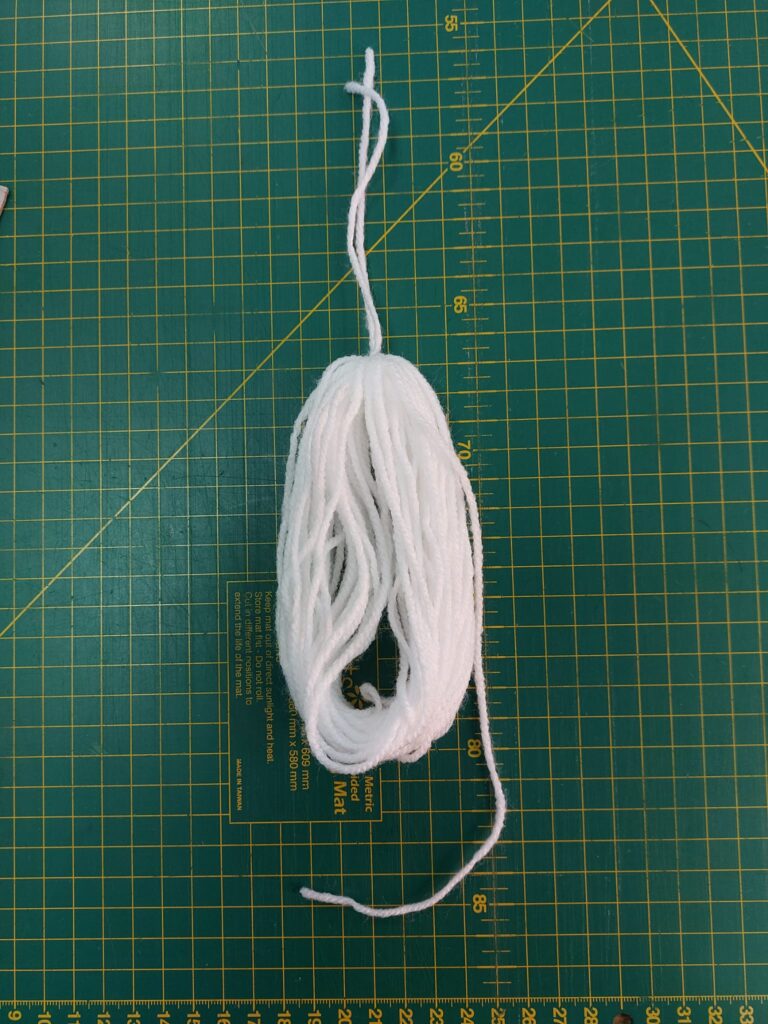
Cut the other end, take another piece of yarn, and tie around approx 3cm from the first tie. This forms the head!
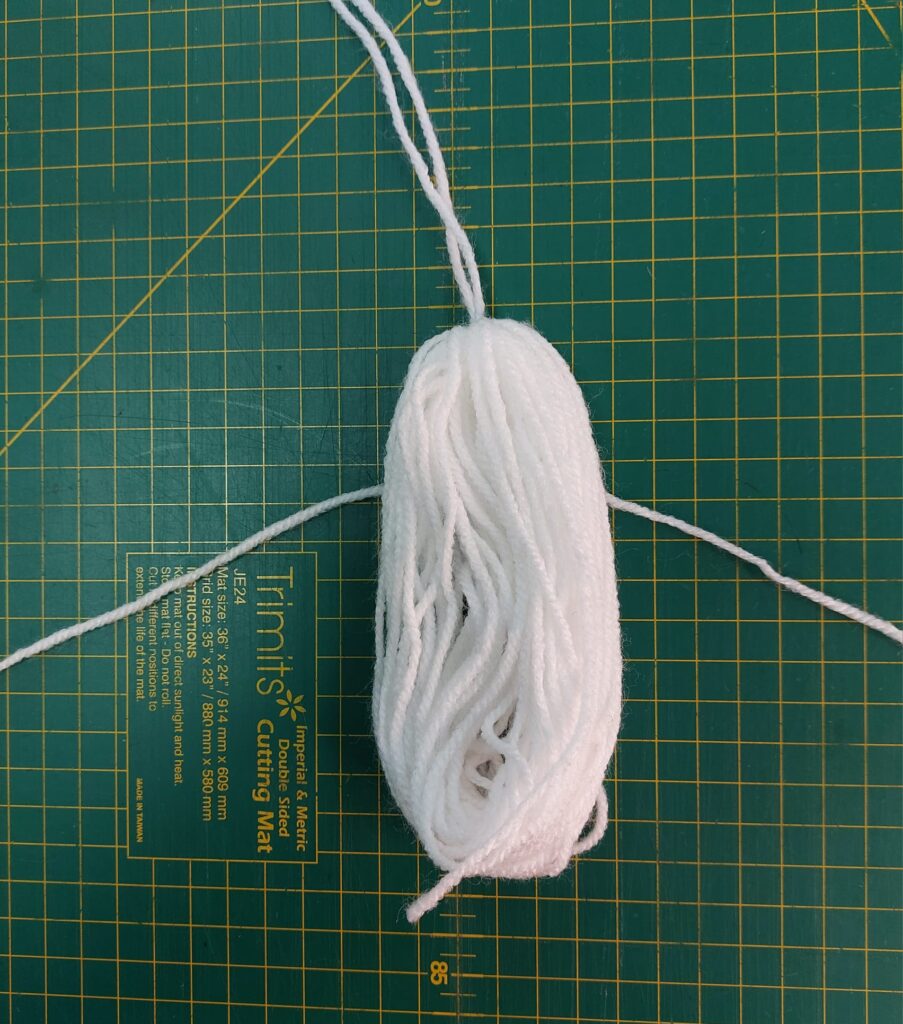
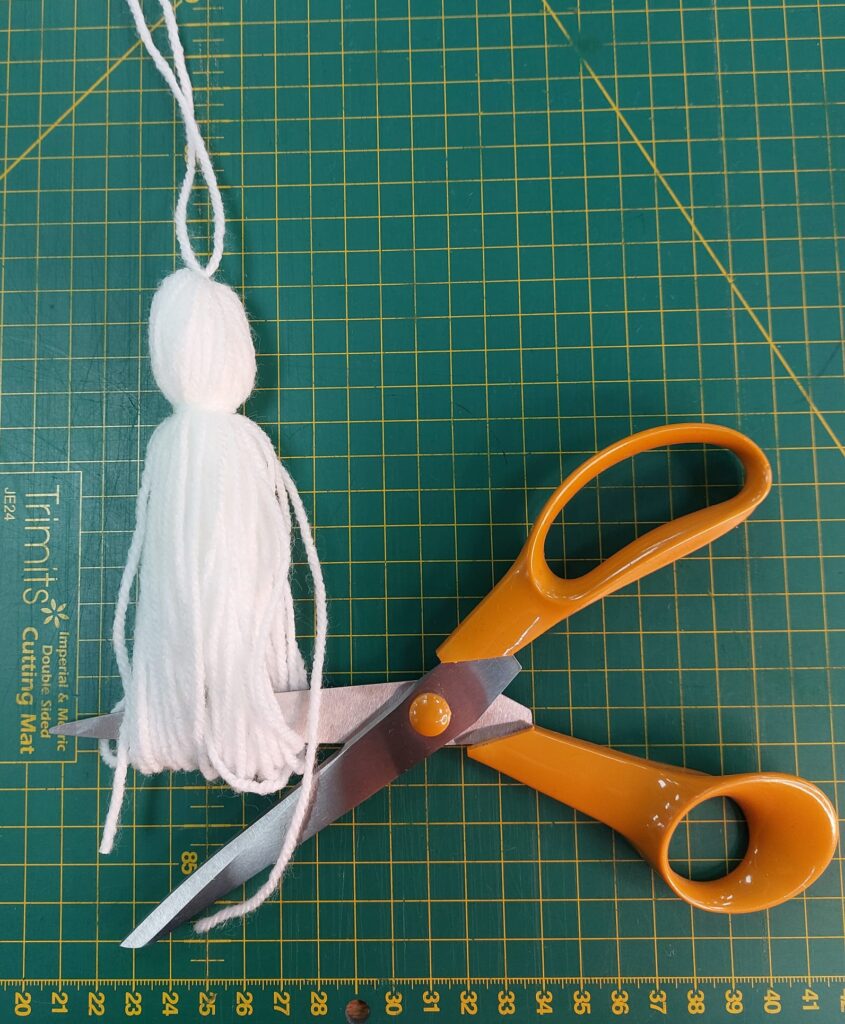
Carefully cut out eyes and a mouth from the black felt and glue them to the head. Alternatively, you could use small beads, pom poms, or buttons instead of the felt.
Finally, give your ghost a trim!
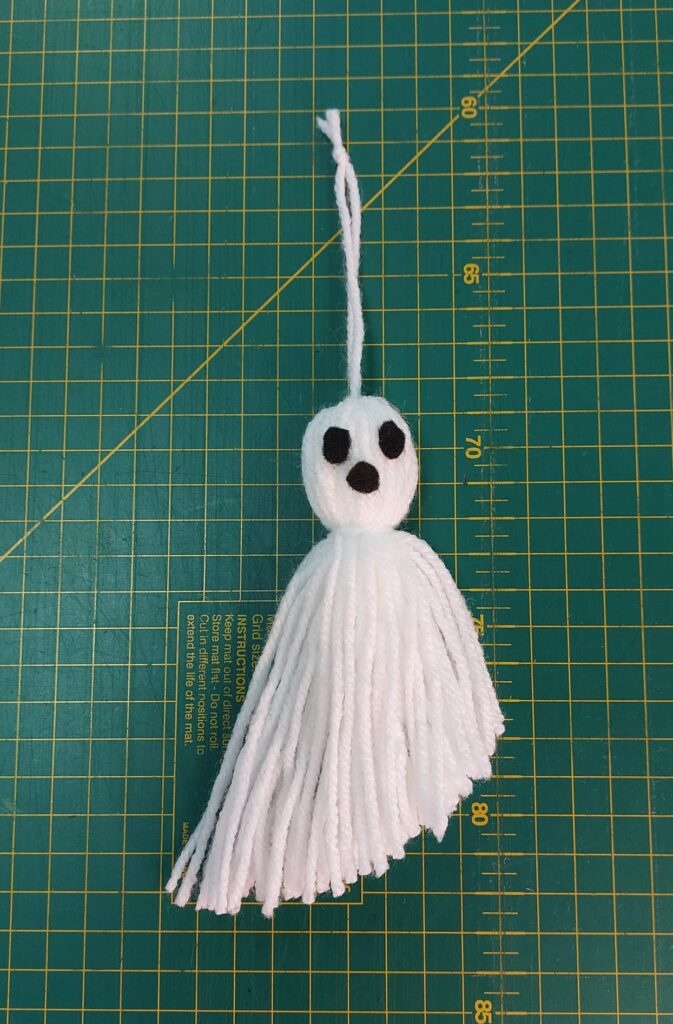
You could further decorate your ghost by adding a bow-tie, ribbon, ears - let your imagination run wild!
Make as many as you like, tie them to a length of yarn/ribbon/tape/cord for unique bunting to decorate your home this Halloween.👻👻👻👻👻👻👻👻👻👻👻
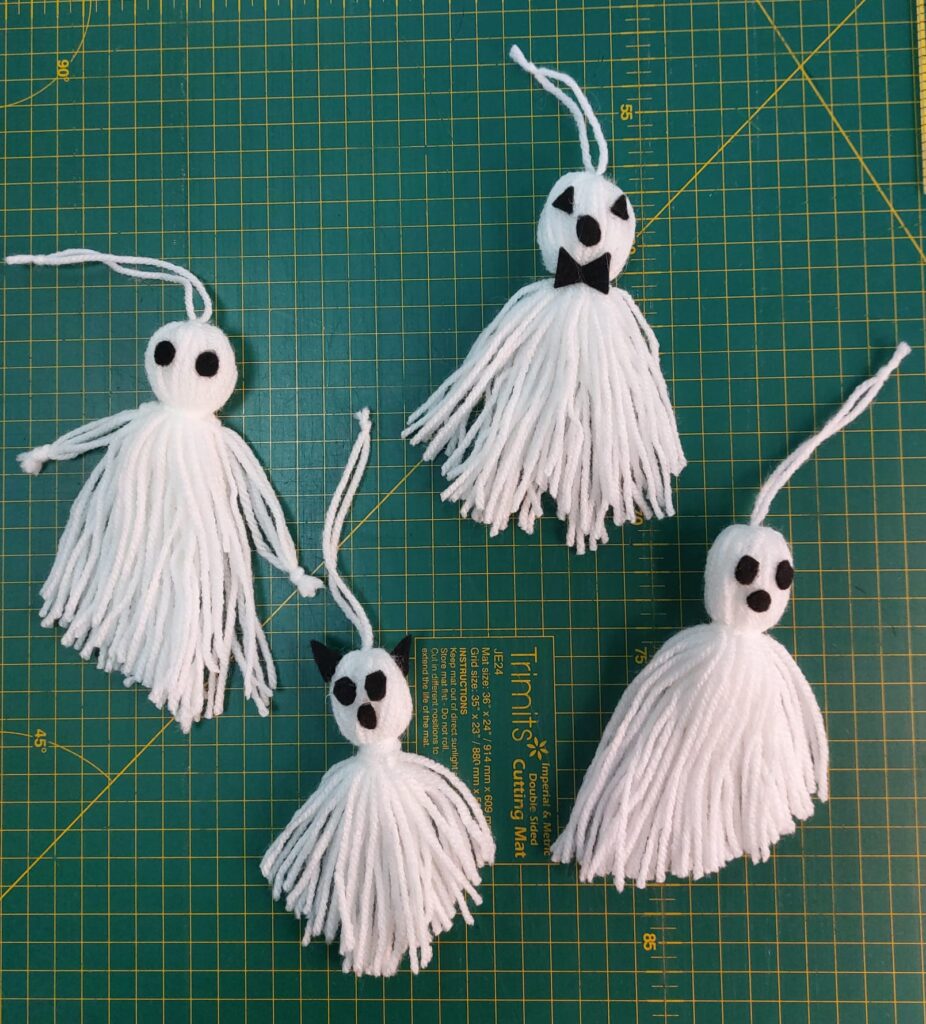
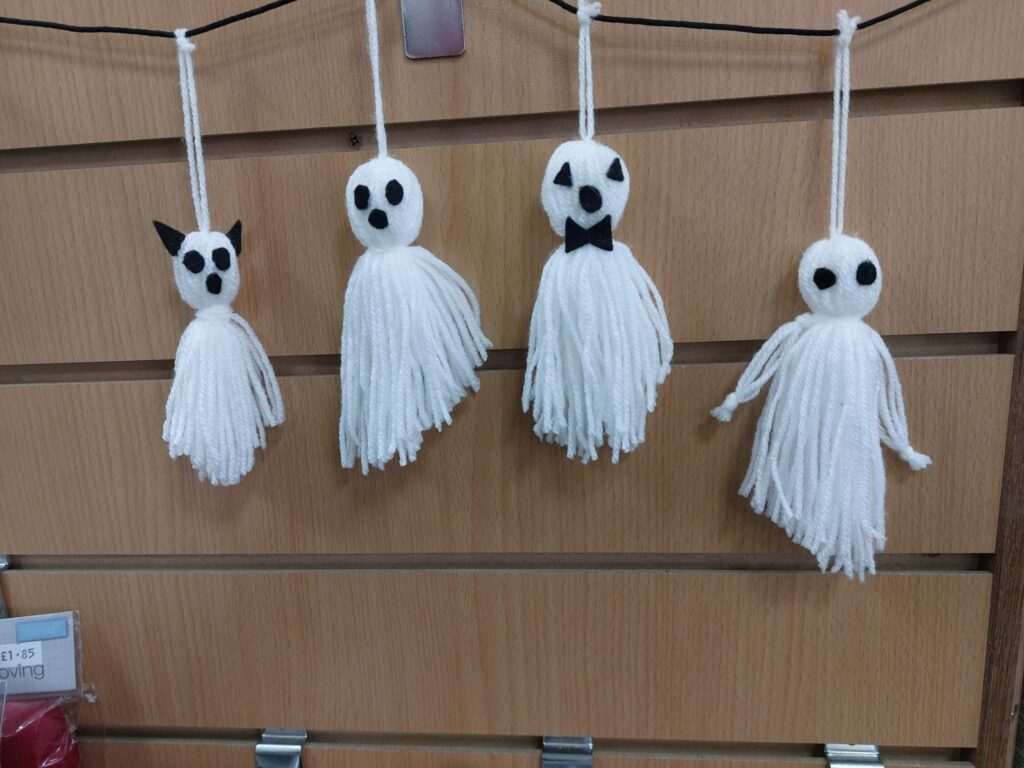
You will need scissors, a needle, fabric, stuffing, strong thread or twine, and cinnamon sticks.
Start off by cutting a circle out of your fabric - it doesn't have to be perfect!
Sew a running stitch around the edge about 2.5cm in, leaving a good length of thread at the beginning and end.
Holding both ends tightly, pull to gather up your fabric to form a bowl shape.
Fill with your stuffing, and pull the threads tighter to close up your pumpkin, leaving a small hole to push in the fabric edges later on.
Tie your thread ends, ensuring they are nice and tight. Trim the threads to about 3cm.
Thread a needle with a good length of either your strong thread or twine and tie a knot in the end to prevent it from pulling through the fabric.
Thread from the top around the outside, dividing your pumpkin in half, and thread through the top to secure this long stitch. Pull a little taught, creating an indent on the outside of your pumpkin.
Continue doing this until you have divided your pumpkin up into 8 segments (4 times around the outside).
Tie your thread or twine tightly at the top and trim off to about 3cm.
Carefully tuck in the excess fabric and thread ends into the hole you left in the top of your pumpkin.
Take a cinnamon stick and push it firmly into the top.
Congratulations, you now have a beautiful pumpkin!!
Have you ever looked at a garment and wished you could create your own unique version? Well, you're in luck! In this comprehensive guide, we'll walk you through the art of making your own sewing patterns. From draping and drafting to modifying and deconstructing, we'll cover various methods to unleash your creativity. Whether you're a seasoned seamstress or a beginner, this guide will equip you with the knowledge and skills to design and sew your dream projects. Let's dive in!
Different Ways to Make Your Sewing Pattern
Draping: Draping involves manipulating fabric directly on a dress form to create a pattern. Pin and shape the fabric until you achieve the desired design, then trace the draped fabric to create your pattern.
Modifying: Take an existing sewing pattern and customize it to suit your vision. Adjust the length, neckline, or add embellishments to make it uniquely yours.
Deconstructing: If you have a favorite garment you'd like to replicate, deconstruct it carefully to create a pattern. This method requires precision to ensure you capture all the components accurately.
Drafting: Drafting a pattern from scratch involves using measurements and mathematical calculations to create a pattern on paper. It's a versatile and rewarding way to design your sewing projects.
How to Make a Sewing Pattern: Materials and Equipment You'll Need
Pattern Paper: Sturdy pattern paper is essential for drawing and preserving your sewing patterns. You can find specialized pattern paper rolls designed for this purpose.
Tracing Wheel and Tracing Paper: These tools help transfer the pattern from the muslin or fabric to the pattern paper without causing damage.
Ruler and French Curve: Precision is vital in pattern making. A transparent ruler and a French curve will help you create smooth and accurate lines.
Pencils and Marking Tools: Use good quality pencils or markers to trace and label your pattern pieces.
Measuring Tape: Accurate body measurements are crucial for drafting a pattern that fits perfectly.
Muslin Fabric: Use inexpensive muslin fabric to create a test version (toile) of your pattern before cutting into your final fabric.
How to Make a Sewing Pattern
Take Measurements: Start by taking your body measurements carefully. These include bust, waist, hips, and any other relevant measurements for the garment.
Draft or Modify the Pattern: Depending on your chosen method (drafting, modifying, draping, or deconstructing), begin creating your pattern on pattern paper. Remember to add seam allowances and markings.
Create a Toile: To ensure a perfect fit, create a toile using muslin fabric. Make any necessary adjustments to the pattern based on the fit of the toile.
Finalize the Pattern: Once you're satisfied with the fit and design, finalize the pattern by transferring it onto a clean sheet of pattern paper, including all notches, grainlines, and labels.
How to Make a Sewing Pattern Fit You
Achieving a well-fitting garment is essential for a successful sewing project. Here are some tips to make your sewing pattern fit you perfectly:
Make sure to take precise measurements and compare them to the pattern's size chart. Choose the pattern size that aligns best with your measurements.
Adjust Seam Allowances: Seam allowances can significantly impact fit. Check the pattern instructions to see if the seam allowance is included or if you need to add it.
Perform Fittings: During the sewing process, perform fittings at various stages to check the fit and make any last-minute adjustments.
The Best Stitch to Use When Making Clothes
For most clothing projects, the straight stitch and zigzag stitch are the two most commonly used stitches. The straight stitch provides a clean and sturdy finish for most seams and hems. On the other hand, the zigzag stitch is perfect for finishing raw edges, preventing fraying and adding flexibility to stretchy fabrics.
Best Sewing Machine for Pattern Making
When it comes to pattern making, a sewing machine with versatile features is ideal. Look for a model with adjustable stitch length, an automatic needle threader, and various stitch options, including straight stitch and zigzag stitch. A computerised sewing machine with digital controls can offer more precision and convenience.
Remember, practice and patience are key to mastering the art of pattern making. So, grab your materials, get creative, and let your imagination run wild as you design and sew beautiful garments that fit you perfectly.
Drop by the Sewing Direct online shop to find everything you need for your next clothing project, including sewing machines, overlockers and sewing accessories. We also have a wide range of fabrics available so you’ll be sure to find one that works for you. Happy sewing!
The ability to be able to sew a zip into whatever creation you have in mind is a truly underrated skill. Of course, it can be quite an intimidating idea if you don’t know how to sew a zip. But not to worry, this is where we come in. With years of experience helping hobbyists all over the UK improve their sewing skills, we know what it takes to help every skill level.
How to Sew a Zip: Equipment You’ll Need
Before you jump straight into sewing in a zip into your fabric, it is a good idea to make sure you have everything you need before you get started. Here is a comprehensive list of items you need to successfully sew in your choice of zip.
- Sewing Machine
- Zipper
- Fabric Marking Pencil
- Sewing Tape
- Zipper Presser Foot
- Thread
- Steam Iron
- Sewing Pins
- Seam Ripper
If you’re short of a few of these items, check out our collection of sewing accessories.
How to Sew in a Zip: Method
Before you begin attempting to sew in your zipper, make sure your sewing machine is equipped with your zipper presser foot. What this presser foot allows you to do is to stitch right next to the zipper teeth creating a far neater stitch line. It also helpfully conceals the edges of the zipper tape, improving the overall finish.
Finish Fabric Edges and Sew Together (Step 1)
The first step is to finish the edges of the fabric you intend on placing the zipper on. We would recommend finishing these with a zigzag stitch. Ensuring you’ve left enough space on each side of your fabric for your pattern’s recommended seam allowance, sew the two pieces together with a regular stitch. Only sew up to where the zipper will be installed.
Baste Zipper Opening and Press Seam Allowance (Step 2)
Using a long basting stitch, stitch the rest of the seam including over the section that will open for the zipper. As this stitch will be removed, there is no need to backstitch the endpoints. With the fabric’s wrong side facing up, if the seam allowance won’t sit flat when pressed open, use an iron to flatten it.
Place Zipper (Step 3)
With the fabric the wrong side up, lay your choice of zipper along the basted section of the seam allowance. Start at the top, ensuring you align the top of the zipper with the top of the fabric. When you’ve settled on your preferred zipper placement, mark the stitch lines with your fabric marking pencil.
Pin Zipper in Place (Step 4)
The penultimate step in learning how to sew a zip is pinning your zip in place. Make sure it is lined up from top stop to bottom stop. Pinning at the top and bottom alone is unlikely to give you as much control so we would recommend using multiple pins or sewing tape.
Stitch Zipper and Remove Basting Stitches (Step 5)
With the correct side facing up and starting at the top of the zipper, ensure your first stitch is just past the zipper pull. Be sure not to stitch too close to the zipper pull in order to maintain a straight stitch.
Once you have reached the bottom of the zipper, stop and turn the fabric 90 degrees to sew a few stitches along the bottom of the zipper. Rotate the fabric again to stitch the other side of the zipper. Ensure you backstitch in order to secure your stitch.
Now your zipper is attached, remove your basting stitches using your seam ripper. Remove any stray threads for a professional finish. This is the time to test your zipper.
Sew in Zips with Ease at Sewing Direct
If you’re looking for the best equipment to make sewing as easy and effortless as possible, look no further than our collection here at Sewing Direct. With a wide range of sewing machines and accessories, you’ll never be short of new ways to fall in love with sewing all over again.
If you have any questions, please feel free to get in touch with us and a member of our team will be more than happy to help you with your sewing query.
When you’re new to sewing a lot of guides can come across as confusing and ultimately put you off trying new techniques and stitches. Here at Sewing Direct, we aim to keep our guides as simple as possible to ensure that everyone has a chance to learn a fantastic life skill.
How to hem with a sewing machine is one of the most popular questions we get asked, which is why we have put together this guide. In 4 simple steps, we will teach you to single-fold hem with a sewing machine, as this is the most useful technique. This is because it can be used on woven and knit fabrics.
Make Sure your Fabric Edge is Finished in some Capacity
The reason for this is simple, as the single hem is just a single fold of fabric, nothing gets enclosed. So with this in mind, by having the edge of your fabric finished in some sort of way you can improve the presentation. It will also help to prevent knit fabric from unravelling or woven fabric from fraying.
Use your sewing machine to run a zigzag stitch along the edge of your fabric to tidy it up in a quick and easy way.
Measure the Hem Allowance
We would recommend using a seam gauge to measure your hem allowance as it is the most accurate. You can also use a tape measure but be sure to double-check your measurements. Single fold hem would typically see a 1 cm and 1.5 cm allowance, however, deeper single hems have also been turned too.
Regardless, it is important to remember that there will be one line of visible stitching on the right side of the fabric at the edge of your fabric’s raw edge.
Apply Pressure to the Single Fold Hem
Now you need to apply heat and pressure to the fabric in order to create a crisp fold to your hemline. Using an iron, press down on the fold whilst being careful not to knock any of the pins holding the hem in place. These are what are holding the fabric in place at the length you measured before.
Sew your Hem with a Sewing Machine
The final step is to begin sewing your hem allowance into place. By sewing a stitch line that is 2mm or 3mm less than your hem allowance, you ensure that it is securely caught in the stitches. To guarantee a straight stitch, use the marked lines on your sewing machine’s footplate. Sew with a medium-length stitch around the hem as you gradually pull the fabric through the machine.
Be sure to use a thread that suits the colour of the fabric you are hemming.
Need more Sewing Machine Advice? Get in touch today
If you need more guidance on not only how to get the most out of your sewing machine, but also how to take proper care of it, please get in touch with us today. Here at Sewing Direct, we treat all sewing machines as if they were our mothers, so you can be sure we will handle your pride and joy with due care and attention.
The new 2023 season of The Great British Sewing Bee is finally upon us. As you can imagine, we’re huge fans of the program – it’s full of everything we hold near and dear to our hearts at Sewing Direct. Some of our absolute favourite sewing projects have come out of this event, and we’re excited to see what the latest batch of contestants can cook up this year.
With that in mind, now is the perfect time to pick out some great sewing project ideas that we can’t stop thinking about. As it’s Great British Sewing Bee season, now is the perfect time to get creative and pick up a new project to work on!
Try These 5 Sewing Project Inspired by Sewing Bee Creations
The Great British Sewing Bee is all about testing contestants’ raw ability, creativity and technical sewing skills. As such, there’s an element of challenge that really brings their creations to life.
The below 5 project ideas fit this mould, so feel free to pick one out to test your own abilities!

1. Couture-inspired Evening Gown
Create a showstopping evening gown with intricate details such as hand-sewn beading, lace appliques, and expertly constructed draping.
This is a challenge certainly not for the faint of heart; your precision sewing, fitting skills, and ability to work with luxurious fabrics will all be tested. However, it’s a challenge that can be extremely rewarding with enough patience and dedication.
2. Tailored Men's Suit
Nothing beats a classic. The tailored suit project is a popular challenge, as it requires excellent pattern matching and attention to detail, as well as a strong understanding of tailoring techniques.
Fitting the trousers, jacket and shirt to a model’s proportions is a great way to flex your tailoring skills and develop them further. With some practice, mastery is not out of reach!
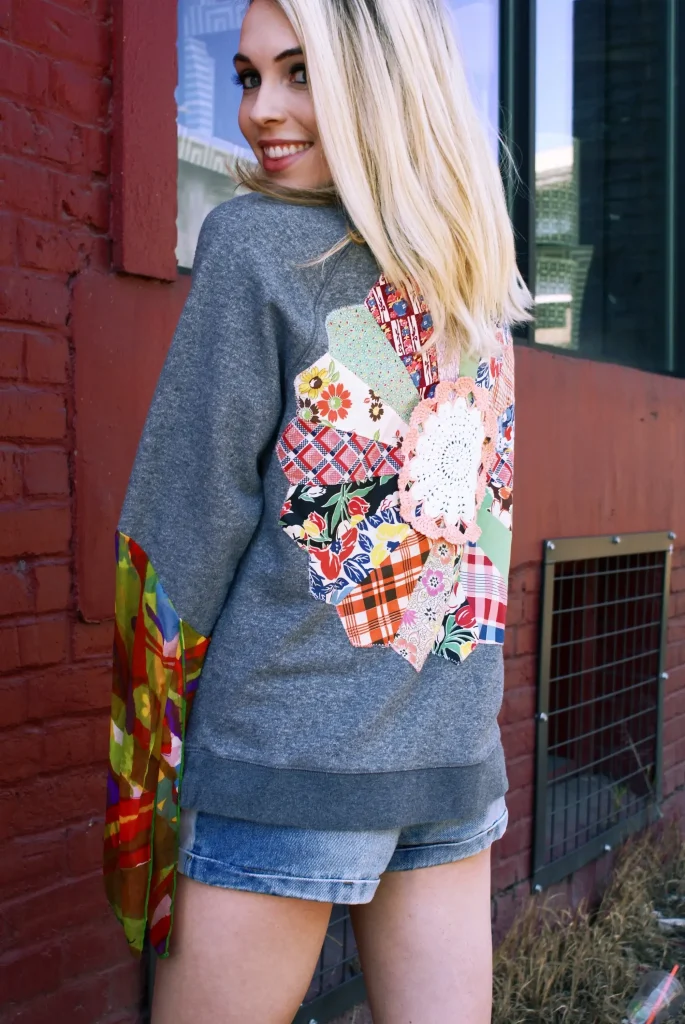
3. Innovative Upcycling
Upcycled projects always go down a treat, and they can be as easy – or as difficult – as you want them to be. Taking old garments or textiles and transforming them into fashionable, unique pieces can result in some truly irreplaceable gems, and it has the added bonus of being a sustainable approach to sewing. It can also give you a newfound appreciation for old clothes, so pick out some unused pieces and engage those problem-solving skills – this one will test your ability to repurpose materials effectively while maintaining a high standard of craftsmanship.
4. Artistic Patchwork Quilt
Patchwork is a passion of ours at Sewing Direct. There are more ways to go right than wrong with these sorts of projects, and while not ‘garments’ per se, they’re still a brilliant way to test and develop your sewing skills.
Choose a variety of fabric combinations and work to piece them together in a complex but visually satisfying pattern. Quilting can be an intricate process, so read our beginner’s guide to quilting with a machine if you need a hand getting started.
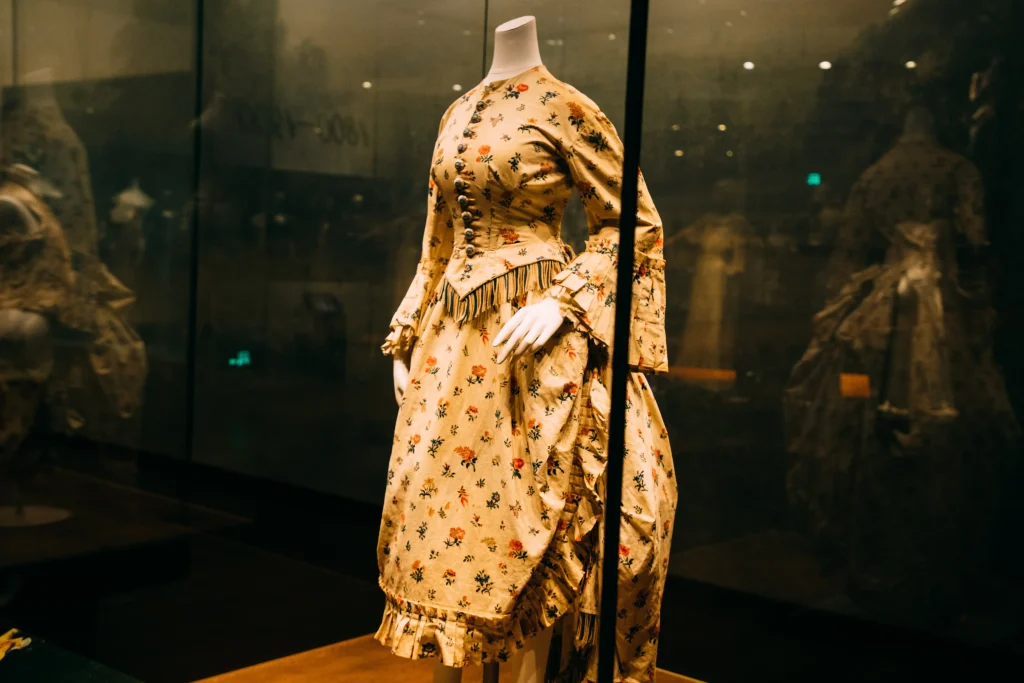
5. Historical Costume Reproduction
This is one that always seems to come up each year on the Great British Sewing Bee, and with good reason. It’s the perfect challenge for pushing you out of your comfort zone by recreating an outfit from a past time, such as an Elizabethan gown or a Victorian frock.
In addition to testing your research skills, it requires attention to historical details and encourages you to experiment with techniques you won’t be able to use elsewhere. If you’re feeling inspiration strike at the thought of it, this may be one for you!
What Sewing Machines Do They Use on the Sewing Bee?
We’re often asked what machines we’d recommend based on what contestants use on The Great British Sewing Bee.
While they use a variety of home sewing machines, there are a few standouts that we can recommend if you’re looking to take your projects to the next level. See our blog on sewing machines fit for the Sewing Bee to find out more.
Bring Your Sewing Creations to Life with Sewing Direct
Feeling inspired? You’re in the right place!
Get into the swing of Sewing Bee season by exploring our sewing machines and sewing patterns for sale. We have something for sewers of every skill level, so feel free to browse what’s on offer or get in touch with us if you’d like some advice on picking out the perfect product.
Getting into quilting is a great hobby that yields great results, but with so many different styles and methods it can be difficult to choose your favourite quilting technique.
Paper piecing is a quilting technique that is both effective and a fun challenge, and at Sewing Direct we have created a handy guide to paper piecing to help you get started.
What is paper piecing?
Paper piecing is a way to create fun quilting patterns, sewing fabric to paper for a strong quilt block no matter the shapes of fabric you are trying to use.
Paper piecing allows you to apply patchwork sewing techniques to your quilting project, creating intricate designs and unique patterns. A paper pattern template is used, with fabrics being sewn directly onto the paper to ensure you create the correct shapes while stitching. Once you have finished piecing your quilt together the paper is either torn or washed off of the fabric, leaving you with a quality quilt without any stress.
Now you know what paper piecing is, how do you make it yourself?
How To Do Paper Piecing Quilt Patterns
Paper piecing is great for those wanting to unleash their creativity on their next sewing project. From geometric styles to bold but simple designs, a paper piecing project is only limited by your imagination.
But how do you begin?
When you have your design in mind it’s time to put it to paper. Paper piecing is easiest to create when using straight lines, allowing you to quickly create fun, geometric designs.
Paper piecing can be started on any regular paper you have lying around. Print or draw your design onto the paper in the exact sizes you prefer, this is because you will be sewing your fabric directly to the pattern.
Next, you will need to cut out your fabric into large enough sections to cover the area of the pattern you will be sewing it onto, leaving an inch of buffer room along the edges.
You will need to pin your fabric sections onto the pattern with the face of your fabric facing up underneath the paper pattern. Once all pieces of fabric are pinned and ready you can begin sewing your project together. You may find it easiest to sew one line at a time, trimming edges as you go to avoid any mixups. Don’t forget to press your edges as you go!
What Do I Need for Paper Piecing Projects?
Paper piecing is a form of quilting, so using a sewing machine that you would use for quilting is a great idea. Bernina provides some excellent sewing machines that are perfect for those looking to get into quilting or paper piecing.
When choosing your fabric you should aim to use light fabrics that are easy to sew and press to create outstanding patterns. Quilting fabrics are an ideal choice to get started with your project.
Why not get started with a classic paper piecing star design for your first project? Or keep it simple with an easy geometric pattern.
Get Started Today with Sewing Direct
If you are looking to get started with quilting Sewing Direct is here to help with useful quilting workshops, fabrics and sewing machines that will help you to bring your idea to life.
For more tips and tricks that will help you get started with a paper piecing or quilting project check out our Beginners Guide to Quilting, or get in touch with a member of our friendly team for more information about workshops and products to help with your quilting journey.
The applique sewing technique is one of the easiest to learn and involves the process of sewing two pieces of fabric together. Thanks to its simple nature, applique is a great way of decorating your favourite fabric household items such as cushions, tea towels, as well as clothes should you want to put your own twist on them.
It is really easy to get to grips with and with our beginners' guide, you will be using this wonderful technique in no time.
How to Applique on a Sewing Machine
The first step to efficiently applique your chosen object is by deciding on the design and the layout. Ensuring that the shapes you go for are not too complicated or fiddly will mean that it will be easier to do. The easier it is to do, the more likely it will turn out to the standard you wish.
Should you want more detail, you will need to consider how you will obtain the results you want. Decide whether it is best to do it by hand or by machine, does it require buttons or does it need an element of embroidery?
Prepare your Fabric Ahead of Time
For the best results when you applique, we would recommend that you use fabrics that are of similar weight. Using shapes cut from lighter fabrics sewn onto a heavier material is also fine, but be wary of doing the opposite (heavy onto light).
A common issue to look out for with applique is the possibility of the fabric fraying. The way to avoid this is by using some fusible interfacing that you simply apply to the fabric and then iron onto the main fabric.
Applique your Shapes to your Fabric
Now that your shapes are all cut out and lightly ironed onto the main fabric using fusible interfacing, it is time to begin sewing. This is the simple part, all you need to do is pin your shapes in place and sew around them.
From this point, the choice of stitch is up to you. For those new to sewing, we would recommend using a simple straight stitch. Zigzag stitches are the middle ground between the aforementioned straight stitch and the traditional satin stitch. The advantages of this are that it covers the raw edges of the shapes, giving your applique a smooth finish around the edges.
On the large majority of sewing machines you are able to adjust the distance between stitches, whether straight or zigzag, so have a play around with your machine’s settings and work out what distance you prefer. Of course, if you need any help or guidance on how to do this, we are only a phone call away.
Get in touch for more information
If you have any questions about your machine or a specific sewing technique, we would be more than happy to help you with your query. Please do not hesitate to get in touch with us.
For more tips and tricks on how to make your sewing experience more enjoyable, why not visit the Sewing Direct blog? Here you can find guides for all the most popular sewing techniques.